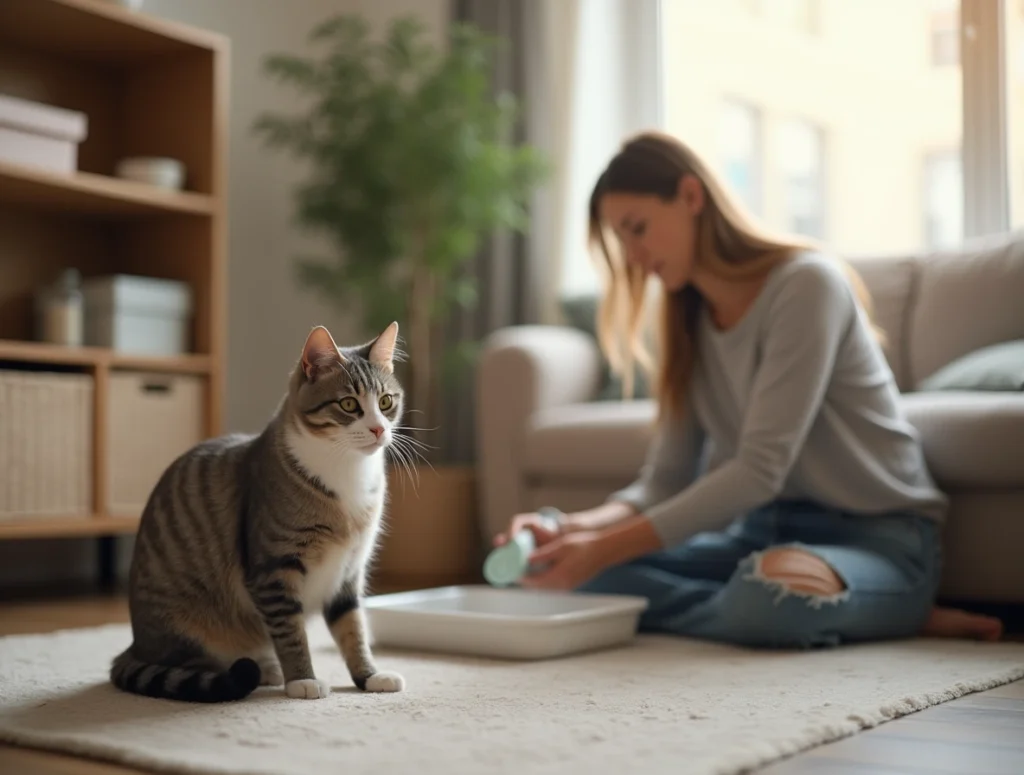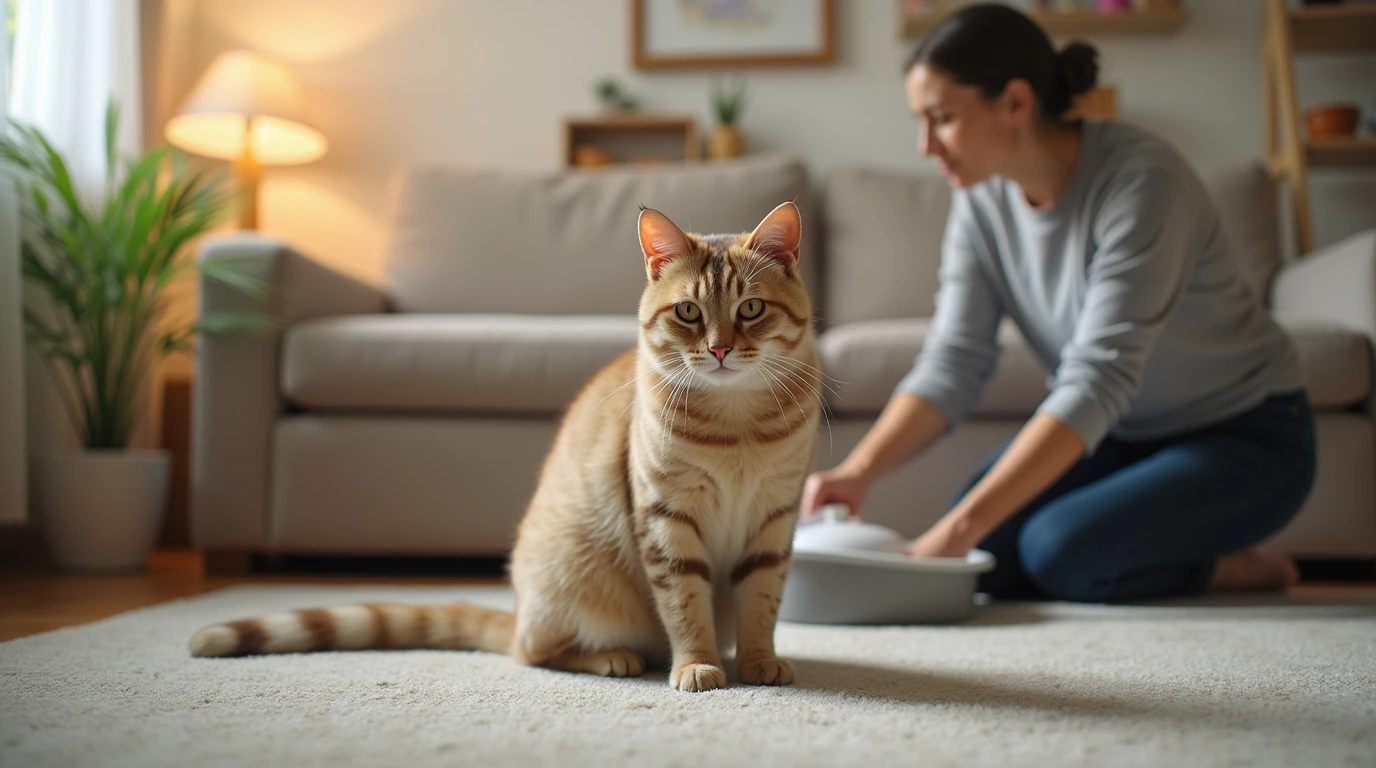Why Is Your Cat Peeing Outside the Litter Box? Causes and Solutions
Finding that your beloved feline companion has urinated outside their litter box can feel overwhelming, even disheartening. Questions swirl in your mind: “Why is this happening? Is my cat upset? What can I do to fix it?” Rest assured, you’re not alone in facing this challenge. This is a common issue that many cat owners encounter at some point, and the good news is that it’s often manageable with the right approach.
Cats are naturally clean animals, so when they deviate from their litter box habits, it’s a sign that something isn’t quite right. This behavior is rarely about defiance or spite; instead, it often points to a medical issue, environmental discomfort, or stress. The key is understanding the root cause and addressing it directly.
Whether it’s a health condition, an unsuitable litter box setup, or emotional triggers like stress or anxiety, identifying the problem is the first step toward a solution. Taking swift action not only helps restore harmony to your home but also ensures your cat’s well-being.
Let’s explore the common reasons why cats pee outside the litter box, along with practical, actionable steps you can take to resolve the issue and support your feline friend’s happiness.
Table of Contents
Understanding Why Cats Pee Outside the Litter Box
Cats are naturally clean and instinctively inclined to use a litter box, so when they start avoiding it, it’s often a signal that something isn’t right. This behavior isn’t about defiance or spite; rather, it’s your cat’s way of communicating discomfort, distress, or an unmet need. It’s important to approach the situation with understanding and patience.
One crucial step is recognizing the difference between urination and spraying, as each behavior has distinct causes and requires tailored solutions. Urination outside the box might indicate a medical issue, such as a urinary tract infection, or dissatisfaction with the litter box setup. Spraying, on the other hand, is often tied to territorial marking or stress.
By observing your cat’s behavior and identifying patterns, you can begin to uncover the root cause. Understanding these signals is the first step toward addressing the problem and helping your cat return to their natural habits.

Medical Reasons for Litter Box Avoidance
Urinary Tract Infections (UTIs)
Urinary tract infections (UTIs) are among the most common medical reasons why cats might urinate outside their litter box. This condition can be uncomfortable and distressing for your cat, often leading to noticeable changes in their bathroom habits. Symptoms to watch for include frequent urination, straining to urinate, or even vocalizing in pain while attempting to go.
Left untreated, UTIs can quickly progress into more severe health issues, such as bladder infections or kidney complications. These infections are not just physically taxing on your cat but can also be emotionally stressful for both of you. If you notice these signs or suspect a UTI, it’s essential to consult your veterinarian promptly.
Early diagnosis and treatment can relieve your cat’s discomfort and prevent further complications. Your vet may prescribe medication or dietary changes to manage the infection effectively, helping your cat return to their normal, healthy routine.
Kidney Disease or Diabetes
Kidney disease and diabetes are common health conditions in cats that can result in increased urination, which might lead to accidents outside the litter box. When faced with these challenges, your cat may struggle to reach the box in time or may opt for softer surfaces like carpets due to urgency or discomfort.
These conditions often come with additional symptoms to watch for, such as increased thirst, noticeable weight changes, lethargy, or changes in appetite. These signs can help you identify the underlying issue early on, allowing for prompt intervention.
If you observe these symptoms, it’s crucial to consult your veterinarian right away. Early diagnosis is key to managing these chronic conditions effectively. Your vet may recommend treatments such as dietary adjustments, medications, or specific management plans to address the root cause and improve your cat’s quality of life. Proactive care can make a significant difference in their overall well-being.
Arthritis or Mobility Issues
As cats grow older, arthritis and joint pain can significantly impact their mobility, making it challenging for them to climb into their litter box. This discomfort might lead them to avoid the box altogether and find easier, more accessible places to relieve themselves.
To address this issue, consider providing a litter box with low sides that allows your cat to step in effortlessly. Senior cats or those with mobility challenges will appreciate this simple adjustment, which can greatly improve their comfort and encourage consistent litter box use.
Pro Tip: Stay observant of any changes in your cat’s behavior, such as hesitation or difficulty moving. Regular veterinary check-ups are essential for detecting and managing mobility-related conditions early. Your vet can recommend treatments or lifestyle changes to help your cat stay comfortable and active, ensuring they enjoy their golden years without unnecessary stress or pain.
Behavioral Causes and Triggers
Stress or Anxiety
Changes in your home, like a move, the addition of a new pet, or even a change in your schedule, can cause stress in cats. This anxiety may lead them to urinate in unfamiliar or inappropriate places as a coping mechanism.
Litter Box Preferences
Cats can be surprisingly picky about their litter box setup. A dirty box, the wrong type of litter, or an undesirable location might drive your cat to seek alternative spots.
Territorial Marking
If your cat is spraying rather than urinating, this is often a sign of territorial marking. This behavior is especially common in unneutered males and can be triggered by the presence of other animals or changes in the environment.
Quick Tip: Identify behavioral triggers and try to eliminate or reduce them to help your cat feel secure.
Environmental Factors Affecting Litter Box Use
Placement Problems
Your cat’s litter box location matters more than you might think. A box placed in a noisy or high-traffic area can deter your cat from using it.
Insufficient Litter Boxes
The general rule of thumb is one litter box per cat, plus one extra. If you have multiple cats, conflicts over litter box access can lead to accidents.
Type of Litter Box
Some cats prefer open boxes, while others may like the privacy of a covered one. Experiment with different options to find what your cat prefers.
Checklist for Ideal Litter Box Setup:
- Spacious enough for your cat to turn around comfortably.
- Cleaned daily to prevent odors.
- Placed in a quiet, low-traffic area.
Practical Solutions to Stop Cats from Peeing Outside the Litter Box
Step 1: Rule Out Medical Issues
The first step in resolving litter box issues is ruling out medical problems. If your cat’s behavior has suddenly changed, schedule a visit to the vet. Provide your vet with detailed observations about your cat’s habits and any other symptoms you’ve noticed.
Step 2: Optimize the Litter Box Environment
Cleanliness Matters
Cats are known for their meticulous grooming habits, and this attention to cleanliness extends to their litter box preferences. A dirty litter box can quickly become an unpleasant experience for your feline friend, prompting them to look elsewhere for relief. To prevent this, make it a habit to scoop the litter box daily, removing waste and maintaining a fresh, inviting environment. Additionally, replace the litter entirely once a week to ensure there are no lingering odors or buildup that might deter your cat from using the box.
Test Different Litters
Just like humans have preferences, cats do too—and that includes the type of litter they feel comfortable using. Some cats gravitate toward clumping litter for its texture and ease of use, while others may prefer unscented varieties to avoid overpowering fragrances. The only way to know your cat’s preference is through experimentation. Try out different types of litter to find the one your cat seems to favor, and stick with it to maintain consistency and comfort.
Relocate if Necessary
Location is key when it comes to your cat’s litter box. Ensure it’s in a quiet, private area where your cat feels safe. Avoid placing the box near noisy appliances like washing machines or in high-traffic zones that may cause stress or interruptions. A well-placed litter box can make all the difference in encouraging consistent use.
Step 3: Address Behavioral Concerns
Reduce Stress
Stress or anxiety can significantly impact your cat’s behavior, including their litter box habits. Creating a calm and predictable environment can go a long way in alleviating these feelings. Start by introducing pheromone diffusers, which mimic natural calming signals and help reduce stress. Provide your cat with plenty of hiding spots, such as cozy nooks or cat trees, where they can retreat and feel secure. Sticking to a consistent routine for feeding, playtime, and interactions further reassures your cat, offering them a sense of stability.
Deal with Marking Behavior
Territorial marking is a common behavior in cats, often driven by hormonal or environmental triggers. Spaying or neutering your cat is one of the most effective ways to reduce this behavior. To address existing marks, use enzymatic cleaners to thoroughly eliminate odors. These cleaners neutralize the scent and prevent your cat from being drawn back to the same spot, helping to break the cycle.
When to Seek Professional Help
If you’ve tried everything and your cat continues to urinate outside the litter box, it might be time to seek professional help. A feline behaviorist can provide tailored advice and strategies. In some cases, your vet may recommend anti-anxiety medications to manage your cat’s stress levels.
FAQs About Cats Peeing Outside the Litter Box
Why is my cat peeing outside the litter box?
Medical issues, stress, or environmental factors could be to blame. Identifying the cause is the first step toward resolving the issue.
How can I stop my cat from urinating outside the box?
Start by ruling out medical problems, then optimize the litter box environment and address any behavioral triggers.
Can stress cause my cat to pee outside the litter box?
Yes, stress is a common factor. Changes in routine, new pets, or other disruptions can trigger this behavior.
What should I do if my cat has a UTI?
Visit the vet immediately for diagnosis and treatment. UTIs are painful and require prompt attention.
Conclusion
Dealing with a cat peeing outside the litter box can be stressful, but with patience and understanding, it’s a solvable problem. By addressing medical concerns, optimizing the litter box setup, and reducing stressors, you can help your cat return to their normal routine. Remember, your furry friend relies on you for care and comfort—taking the time to understand their needs can make all the difference.

